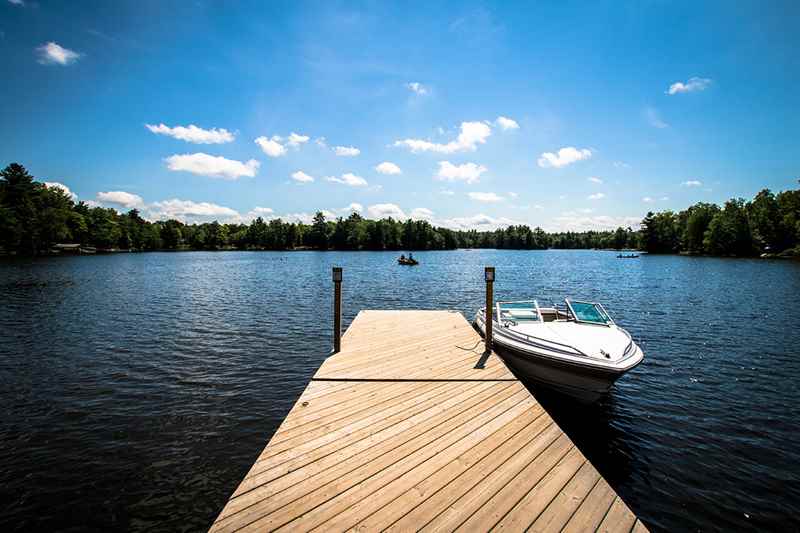Introduction: How to Winterize a Boat Air Conditioner.
As the crisp breeze of autumn heralds the approach of winter, boating enthusiasts begin to contemplate a crucial task. Winterizing their vessels. At the heart of this process is the boat’s marine air conditioner system, often overlooked until it’s too late. Let’s set the stage for securing how to winterize a boat air conditioner, ensuring it emerges in the spring ready for sun-soaked adventures.
In This Article
Setting the stage: how to winterize a boat air conditioner system.
Imagine stepping onto your boat on the first warm day of spring, ready to bask in the gentle sun, only to find your air conditioning system has suffered from the winter’s harsh sea water. To prevent such dismay, winterization must be considered an essential ritual for air conditioners. This preparation involves inspecting, cleaning, and safeguarding the components of your boat’s air conditioning system. If neglected, this can lead to costly repairs or replacements.
Importance of protecting your boat’s air conditioner during colder months.
Why stress the significance of protecting your boat’s air conditioner during the off-season? The answer lies in the delicate dance between technology and nature. Water retained in the system can freeze and expand, causing pipes to burst and damage to occur. This is why it is important to close the seacock. You should also use a sea strainer and a chiller unit for regularly cooling the ac units to prevent overheating. Without proper care, mold and mildew may also take residence within, leading to unpleasant odors and potential health risks. Hence, shielding your air conditioning system from winter’s frosty clutches not only preserves its functionality but also maintains the overall well-being of your marine sanctuary.
Previewing the key steps involved in how to winterize a boat air conditioner.
To ensure your boat’s air conditioning system stays in shipshape, a few key steps should be at the forefront of your winterization plan. Draining any water from the system is the first line of defense against Jack Frost, followed by introducing antifreeze to the pipes to stave off freezing temperatures. Lastly, covering and insulating your air conditioning unit provides an additional layer of protection against the elements. By following these steps, you’ll be setting sail for success come the thaw of spring.
Understanding Your Boat’s Air Conditioning System.
Embarking on the journey of maintaining your boat’s comfort through the chilly months begins with a solid grasp of its air conditioning system. How does this essential piece of equipment keep your cabin cool during summer and why should it concern you when temperatures plummet? Let’s dive into the mechanics of marine air conditioning to set the stage for proactive winter care.
Overview of How Boat Air Conditioning Systems Work.
At its core, the air conditioning system on your boat functions much like the ones found in homes or cars but with adaptations for the marine environment. It operates on the principle of heat exchange: warm cabin air is drawn into the system, cooled by passing over a cold evaporator coil, and then pushed back into the living spaces, offering relief from the heat. A refrigerant within the system absorbs cabin heat and releases it outside, via a condenser. This cycle keeps repeating, maintaining a comfortable temperature even on the hottest days.
Common Components of a Boat’s Air Conditioning Setup.
The efficiency of this cooling cycle hinges on several key components. The compressor, the heart of the system, pumps refrigerant through the unit. The aforementioned evaporator coil absorbs heat from the cabin air, while the condenser dispels it overboard. Additionally, there are thermostats for temperature control, filters to clean incoming air, and ducts that distribute the cooled air. Not to forget, the raw water pump plays a vital role in transferring heat from the condenser to the ocean, lake, or river your boat floats in.
Factors to Consider When Choosing the Right Air Conditioning System for Your Boat.
Selecting an air conditioning system that matches your boat’s requirements is not just about cooling capacity. It’s a balance between power consumption, size, and the specific needs of your vessel. Consider the available space for installation, the electrical system compatibility, and how the system will handle the harsh marine environment. Is it corrosion-resistant? How easy is it to maintain and service? These considerations, along with the type of refrigerant used and its environmental impact, all play into selecting a system that will serve you reliably in the long term.
In sum, understanding your boat’s air conditioning system is the first step towards ensuring its longevity and performance, especially as you head into the winter months. By familiarizing yourself with how the system works, what makes it tick, and what to look for when equipping or upgrading, you’ll be well on your way to safeguarding your comfort—and your investment—year-round.
Why Knowing How to Winterize A Boat Air Conditioner is Crucial.
As the leaves start to change color and the temperature begins to drop, boat owners must turn their attention to the important task of preparing their vessels for the colder months ahead. Just as you wouldn’t leave your home’s windows open in the middle of winter, ignoring the needs of your boat’s air conditioning system can lead to a boatload of troubles.
Risks of Not Knowing How to Winterize A Boat Air Conditioner.
At the heart of the matter, the risks associated with not winterizing your boat’s AC are both immediate and long-term. When water remains in the system, freezing temperatures can turn it into ice, which is infamous for its expansive properties. This can lead to cracked components and leaky seals, resulting in costly repairs when you’re eager to set sail come springtime. Moreover, corrosion and mold growth thrive in systems left idle and damp, which not only damages the system but also poses health risks.
Potential Damage That Cold Weather Can Cause to the System.
Cold weather doesn’t just bring hot chocolate and cozy nights. It brings real threats to your boat’s air conditioning system. The condenser, evaporator coils, and pipes are particularly vulnerable to the cold. If water freezes inside the evaporator, for instance, it can cause the coils to rupture. Similarly, if antifreeze isn’t used, the pump and other components can suffer from the expansion of freezing liquids. These kinds of damage can be extensive and expensive, often requiring professional service or complete replacement.
Long-Term Benefits of Properly Knowing How to Winterize A Boat Air Conditioner Unit.
On the flip side, taking the time to winterize your boat’s air conditioning system bears fruit in the long run. Not only does it extend the lifespan of your system, saving you money, but it also ensures that the unit will be ready to perform at its best when the season turns warm again. Proper maintenance wards off the gradual decline in efficiency, keeping energy costs in check. In essence, winterization is an investment in both the present protection and future performance of your boat’s air conditioning system.
Step-by-Step Guide: How to Winterize A Boat Air Conditioner.
As the leaves change color and the temperature drops, it’s clear that winter is on its way. For boat owners, this season calls for special preparation, especially when it comes to maintaining your vessel’s air conditioning system. Let’s dive into a step-by-step guide to ensure your boat’s air conditioner is ready to face the cold.
Draining the Water from the System to Prevent Freezing.
The first step in the winterization process is to drain all water from your boat’s air conditioning system. Water left inside can freeze, expand, and cause severe damage to the internal components. Start by locating the system’s water inlet and outlet valves. Once found, shut off the water supply and disconnect the hoses. Allow the water to drain completely from the system. You may need to use a low-pressure air source to blow out any remaining water from the lines. This precaution prevents the water from freezing and cracking the pipes, which could lead to expensive repairs down the line.
Using Antifreeze to Protect the System During Winter.
After draining the system, the next line of defense is antifreeze. But not just any antifreeze—the correct type is non-toxic propylene glycol-based antifreeze, designed specifically for marine applications. To apply it, circulate the antifreeze through the air conditioning system according to the manufacturer’s instructions. Ensure that it reaches all areas of the system for comprehensive protection. The antifreeze will lower the freezing point of any residual moisture, safeguarding against the harsh winter temperatures that can wreak havoc on an unprepared system.
Covering and Insulating the Unit for Added Protection.
Finally, covering and insulating your air conditioning unit can provide another layer of security against the winter chill. Use a breathable cover to shield the unit from debris and moisture, which can lead to corrosion or mold growth. Additionally, insulating exposed pipes with foam insulation sleeves can help prevent any residual water from freezing. Remember to secure the cover properly to prevent it from blowing away in strong winds, and check periodically throughout the winter to ensure everything remains intact.
Winterizing your boat’s air conditioning system is a crucial step in protecting your investment. By following these steps—draining the water, using antifreeze, and covering the unit—you’ll help ensure that when spring rolls around, your system will be in top condition, ready for those warm breezes and sunny days on the water.
Conclusion and Call-to-Action.
As we wrap up our discussion, it’s crucial to revisit the significance of winterizing your boat’s air conditioning system. This preventative measure cannot be overstated. It’s about safeguarding your vessel against the ravages of winter, ensuring that when the warmer breezes return, your air conditioning is ready to perform without a hitch. Remember, prevention is always better than the cure, especially when it comes to marine maintenance.
Reaffirming the Value of Winterization.
Throughout our guide, we’ve explored the ‘whys’ and ‘hows’ of protecting your boat’s air conditioning from cold weather damage. From draining the water to prevent ice formation to using antifreeze for internal protection and properly insulating the unit, each step plays a pivotal role in extending the life and efficiency of your system. By taking action now, you’re not only avoiding costly repairs but also ensuring peace of mind throughout the off-season.
Proactive Measures for Your Peace of Mind.
Now that you’re equipped with the knowledge, it’s time for action. Don’t wait until the first frost. Make winterization an integral part of your end-of-season routine. Treat your boat’s air conditioning system with the same care as you would the engine or hull. After all, it’s an investment worth protecting. A well-maintained air conditioner will serve you faithfully for many summers to come, providing comfort and enjoyment on the water. Learn about more boating accessories to suit your needs, such as boat seat swivels.


















